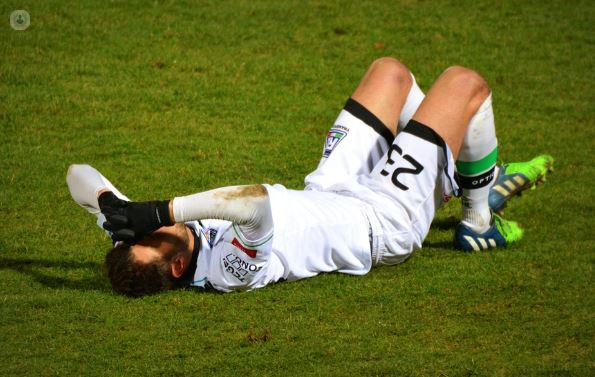Pubalgia (sports hernia)
Dr Duncan Robertson - Sports medicine
Created on: 02-05-2013
Updated on: 04-19-2023
Edited by: Jay Staniland
What is pubalgia?
Athletic pubalgia, also known as a sports hernia, is a common injury among athletes. This condition starts off as pain in the pubis and often affects different muscles in the groin area. It is sometimes also referred to as groin pain.
Prognosis of pubalgia
A sports hernia can last up to eight weeks, depending on when it is diagnosed. This time frame is due to the fact that a lot of people wait to see if it gets better before seeing a specialist.
It is important to get it seen to as early as possible, as in later stages it can cause pain even when resting.
What are the symptoms of pubalgia?
Athletic pubalgia symptoms may vary and they tend to get worse after a few days, often radiating to the muscle. The pain is mainly felt in the groin area or the lower abdomen.
- The pain first starts after training or when finishing an intense workout.
- Following this, the pain is felt while working out.
- Finally, the pain starts just after starting the same exercise - often it is not possible to complete the exercise.
- The pain often becomes constant, even when resting, and interferes with simple movements.
What are the causes of pubalgia?
There are many things that can cause a sports hernia and they can generally be classified into two categories:
- Intrinsic factors: those related to individual characteristics
- Shortening of lower limbs
- Hip dysplasia
- Abdominal wall weakness
- Hyperlordosis
- Extrinsic factors: these may be repeated microtraumas, muscle overload due to overexertion, and poor quality sports facilities among others.
How can pubalgia be prevented?
The best way to prevent injury is to warm up before exercising. This way movements that can trigger injuries can be avoided. The following tips are highly recommended:
- Exercises that strengthen hip stabilising muscles.
- Cut down on workouts. It´s important to rest as soon as any discomfort is noticed.
- Isometric work on adductors, abductors, obliques, and on the rectus abdominis.
- Abductor, adductors, and abdominal strengthening exercises.
What is the treatment?
To achieve an early recovery it is important to detect and diagnose it as early as possible. Conventional medicine may delay diagnosis and recommend the treatment just be rest and painkillers, which could be harmful in the long term.
Treatment tends to be:
- rest
- anti-inflammatories to reduce pain and swelling
- electrotherapy techniques (magnotherapy or laser for example)
- adductor and abdominal massage therapy
- specific warm ups to avoid it becoming chronic
- some cases may need surgical intervention to reduce pressure on the abdominal pubis and adductors.
What specialist should I see?
Generally, specialists who treat athletic pubalgia are sports medicine physicians, orthopaedic specialists, and physiotherapists.

